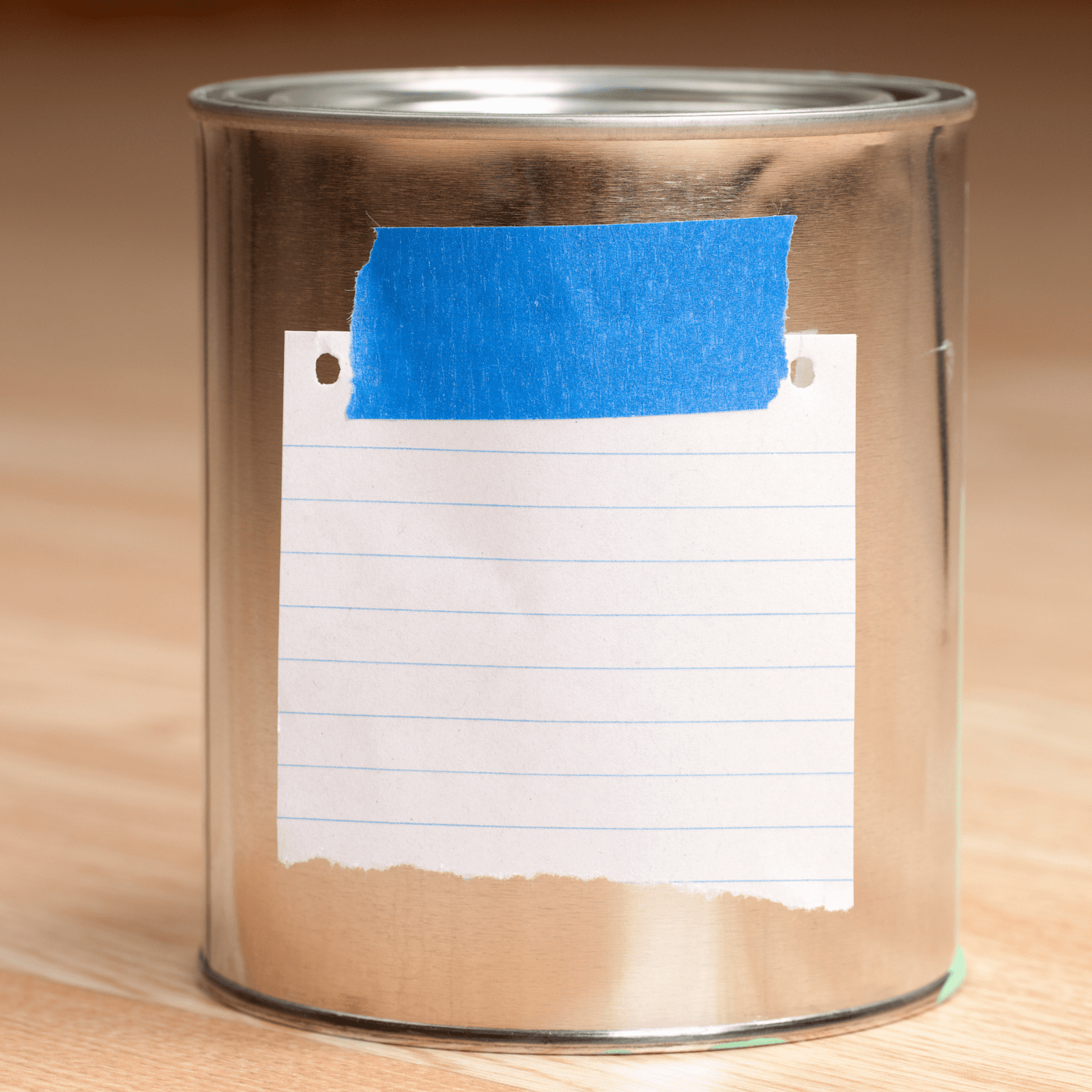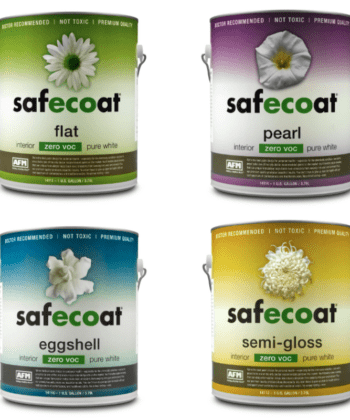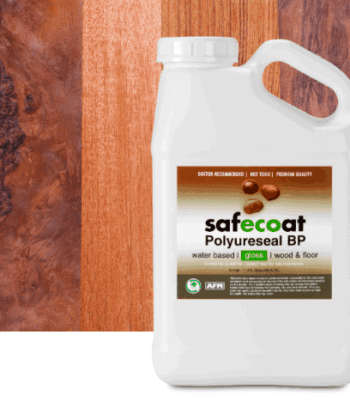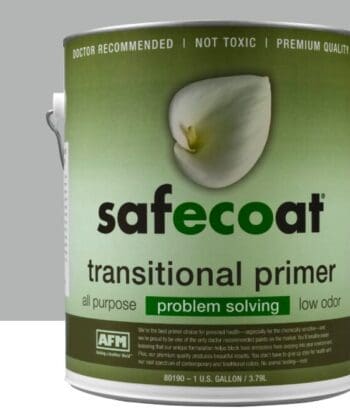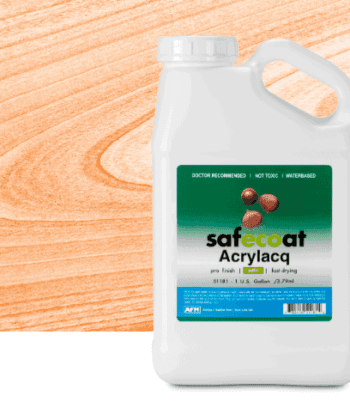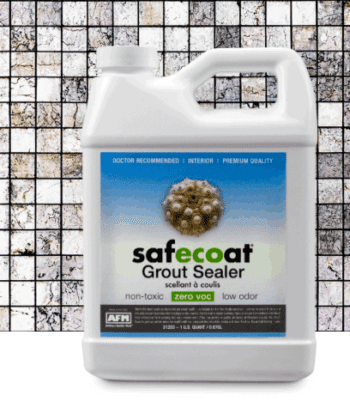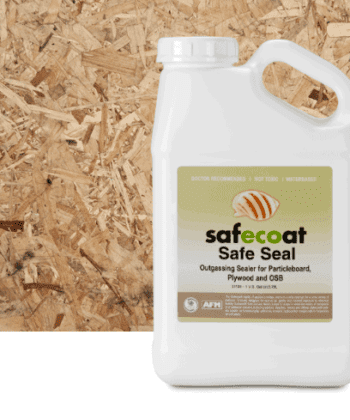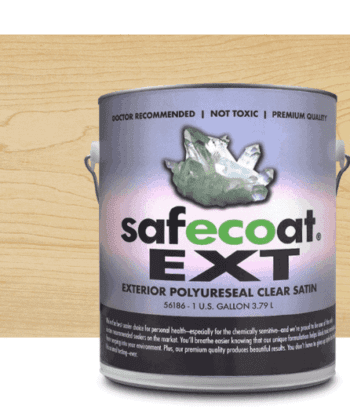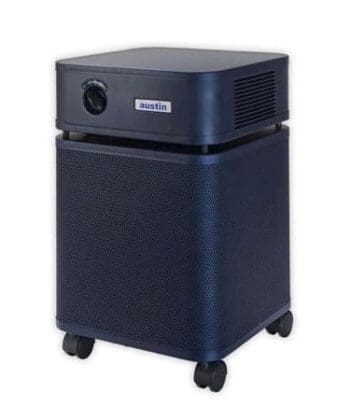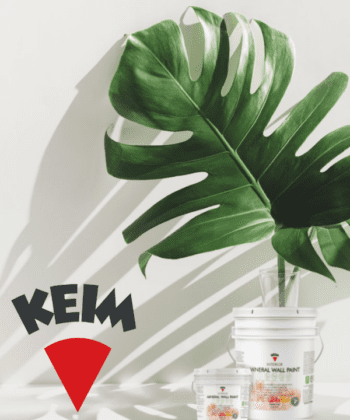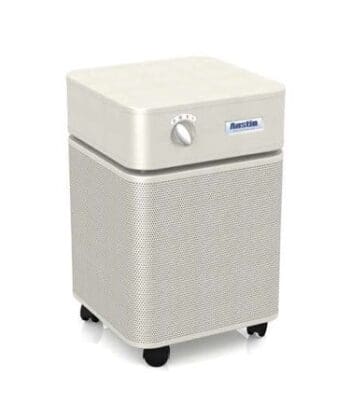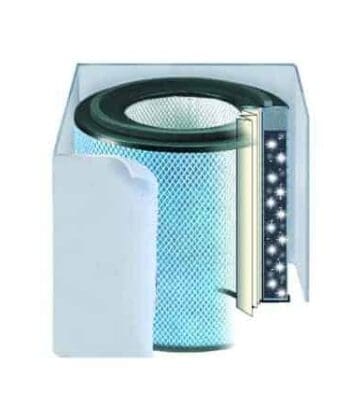NTE Podcast: Off-Label Uses
Every once in a while, we’ll be on a project where we need to come up with a creative fix. Using a product in a new way…one which the manufacturer never really intended it to be used. We call these ‘off-label uses’. There are many we developed over the years and Jay and I had a chance to discuss a few of them today.
iTunes
Spotify
Transcript
Off Label Uses
Andy Pace:
Welcome to Non-Toxic Environments, your trusted source for information about healthy, sustainable, and common sense construction. Hello, folks. Welcome back to Non-Toxic Environments. Jay, we got a pretty interesting topic or a series of topics for today, don’t we?
Jay Watts:
Yeah, we do. We were going to talk about some of the little secrets that you and I have gained over the years about how to use different products, specifically AFM products. So, yeah, let’s talk about that. I think there’s some interesting combinations that people might not necessarily have thought about.
Andy Pace:
Well, yeah. I affectionately call these “off-label uses” of things.
Jay:
There you go. Off label. Yeah. So, you’re not going to see it on the label, folks. You’re not going to see an instruction necessarily about this. We’re going to tell you.
Andy Pace:
If you ever talk to me personally about some of these things, I’ll actually tell people, listen, there is just not enough space on the label to put everything possible that you can do with some of these materials. You’d have to strap a book onto the side of each can.
Jay:
Yeah. It’s true.
Andy Pace:
Just because something isn’t necessarily mentioned on a label doesn’t mean you can or can’t use it. And so, it’s just always good to ask somebody, ask a professional who knows. And so, I offer these with experience in using myself as you do as well.
Jay:
Yeah. We know that when projects are in the fire of a project, there may be situations where some of these ideas may be very helpful in terms of expediting your project in a way, maybe even saving you a little money. Not necessarily always the case, but it’s something that you have as a part of your, what you can do when you need to do something that might be off-label.
Andy Pace:
Exactly. Exactly. And so, I’ll kick it off, and I’ll just mention something that we’ve done in the past, or we’ve even talked about in the past, was the idea of when you’re mixing grout. And I always tell customers, if you want to buy the healthiest grout available, besides the specific brands and styles that I’ll mention during consulting, generally speaking, if you buy what’s called a ‘dry bag mix’, which is just a powder that you mix with pure water, that’s going to be the safest way to go. Now, what I’ll have customers do sometimes, and this was done, I believe, JS2 down in Texas has done this for a number of their projects.
Jay:
Yes.
Andy Pace:
First, they’ll mix water 50-50 with AFM Safe Seal. And then, they’ll use that as the liquid component in the dry powdered grout. And what this will do is actually improve the stain resistance, the natural stain and moisture resistance of the grout without having to then add a grout sealer on top of it.
Jay:
I guess a question that’s come up, Andy, is and grouts these days come in different varieties. And you can get grouts that are basically fortified, which means in essence, you don’t need to seal them. So, I don’t see that doing an integral mixture like this would be a problem. I think it would just help the situation. They say polymer added.
Andy Pace:
Yup. Yes.
Jay:
And so, if we’re basically fortifying the polymer added idea, I don’t see that there’d be any problem. Do you?
Andy Pace:
I don’t. Now, there’s a couple of caveats here. One is you can’t do this with premix grout.
Jay:
There you go.
Andy Pace:
And some of the dry bag mix that’s out there that has a lot of polymer added, I think of one called Prism. It’s a dry bag mix, but it has a dried polymer that blooms once you hit with water. I think by putting Safe Seal in, it might actually be too much. It might get a little too sticky during the mixing. So, I’m talking about your run of the mill, dry bag mix that doesn’t have a lot of that added polymer. And if you have questions, you can certainly reach out, and we can describe this to you. But again, one of the off-label uses of Safe Seal, there’s 100 of them, but that’s one that we get most often.
Jay:
Yeah. And it was one that came from a long time ago, remember? It was algae relief shop. And before we had grout sealer, that’s the recommendation that they were making down there.
Andy Pace:
Got it. You got it.
Jay:
Down at Allergy Relief.
Andy Pace:
That’s right.
Jay:
That’s a good one. How about this one? This is the one you and I both like. It’s when you’re doing a job where you are staining wood for a project, and you’re also going to be using a clear coating over the stain, one of the nice off-label options there is to literally mix your stain into your clear finish.
Andy Pace:
Yes.
Jay:
And that allows a couple things. It takes some of the time, application time out of the equation because you’re doing a mixture. And it allows for some color options that are interesting, depending on how much stain you put into the clear finish. So, if you’re looking, if you just want to tone the wood, you don’t need a real saturated stain, this is one way you can do that and speed up the process.
Andy Pace:
That’s right.
Jay:
How have you seen it done?
Andy Pace:
Well, I’ve seen it done that way. Matter of fact, as you say, if you don’t want to really… Let’s say you’re working with a real wide grain wood, like oak. And when you stain oak and you try to stain it light, what happens is there’s some really wide spring wood in oak that absorbs stain really fast and really dark. And it looks a little too rustic sometimes for people. And if you mix your stain in, a little bit of stain with your first coat of poly, it actually just will give it a lighter cast of that color all the way across the wood. And it won’t really saturate that spring wood. So, you get a better overall toning of the wood. Now, that’s one way I’ve seen it done.
The other way, which I thought was really interesting, and it worked out wonderfully, several years ago, we had a chance to work on this monumental project. It was about 5,000 square feet of white oak. It was brand new white oak, but they wanted to give it the look of old-fashioned fumed oak. Now, if you’re not familiar what fumed oak is, it’s a process that’s been done for a long time, but it usually uses a lot of nasty chemicals including ammonia and some other things. All right. But at the end of it, it looks like it’s dark aged, but really deep. The depth of color is fabulous in the wood. Popular with different styles, like mission style furniture and some other things.
Well, we did two coats of the AFM stain in a walnut, and that didn’t quite have the color, the flavor we were looking for. So, we did the first coat of poly mixed with walnut, and it just evened everything out, Jay. It just looked beautiful. And it was perfect, absolutely perfect for what this customer was trying to achieve. We’ve done the same thing with ebony stain, where you’re doing a couple coats of stain. And then, your first coat of poly includes stain. Because again, it just evens out all the different porosities of the wood with color. And then, from that point, you would put on your clear coats.
Jay:
Yeah. And the benefit there too is you’re actually strengthening the coating durability because you’ve actually got more coating in there. You’ve got more clear finish.
Andy Pace:
Right. Right. Yeah. Because I don’t really look at that first coat of poly with stain as being a full coat of poly.
Jay:
No. No, not at all. No.
Andy Pace:
At that point, then you’re doing two coats of clear, and one coat of match, or whatever you want for your finish.
Jay:
Then that is fantastic. I love that one.
Andy Pace:
Excellent.
Jay:
And you can do that with furniture too, folks. And it’s not just Safecoat Polyureseal, so you could do it with Safecoat Acrylacq as well.
Andy Pace:
Correct. Correct.
Jay:
And that really gives you a lot of options, a lot of creative options too, especially as Andy alluded to, you’ve got a client who has a real vision of what they want that wood to look like. And Andy just shared that story. That’s fantastic.
Andy Pace:
You know what’s interesting, Jay? Over the years, working with these materials, one of the things I’ve really grown to love is the ability to just play around with the materials, and mix and match, and see what works, what doesn’t work, and create our own ways of doing things.
Jay:
Yeah. Oh yeah.
Andy Pace:
And again, off-label uses, for the masses, for most people who don’t really have the skill sets to play around with products until they come up with something. It’s not the easiest thing in the world, but it’s a lot of fun. So, I certainly encourage it for any of the AFM dealers that are listening, to get your hands dirty and try some things because it ultimately, you may invent something that your customers will love.
Jay:
I was just going to say, if you discover something we haven’t discovered, would love to hear it. Another thing too about this, Andy, that’s nice, if a contractor’s in a jam, and there may be an option, off-label, that would help pull a project together, that, to me, would be golden for anyone who finds themselves in the situation where, hey, what do we do now? There may be an off-label option that’ll solve the problem. And that’s, to me, a really important thing.
Jay:
So, I got a call the other day, and it was a situation where someone had used the Safecoat Transitional Primer and Safecoat paint in a situation, and this is very common, where the client had used another brand of coating, another paint company, and their off gassing was basically overwhelming. And so, they found out about us, and they heard about the primer paint combo to take care of that. And they did it exactly by the book, all the right things to do. Put it on right. Let it dry right. Make sure your environment was correct. All of that was fine. And nothing changed. They couldn’t figure out what was going on.
Andy Pace:
Oh boy.
Jay:
Until, the husband and wife, and the wife was upstairs in a room when there was the pollution going on. And they had their filtrations, their purification system running at the time. So, she just shut it off for a little bit. And literally, within five to 10 minutes, she experienced no off-gassing.
Andy Pace:
Whoa.
Jay:
Just by shutting off the unit. Andy, what’s going on?
Andy Pace:
Well, it sounds to me like the filtration system was actually making things worse.
Jay:
That’s it. That’s it. So, they had a carbon and a HEPA.
Andy Pace:
There we go. It’s the carbon.
Jay:
So, yeah. So, the carbon’s going to suck up. Yeah.
Andy Pace:
It’s the carbon. I’ll guarantee it. Carbon, what happens is carbon will, it filters so well, especially when it comes to chemicals and acrylic molecules.
Jay:
Resins? Yeah.
Andy Pace:
That they’ll get packed full. The space between the carbon gets packed and gets coated. And so, I even know this from working with the Austin Air units for a long period of time. Their systems have a five-year guarantee with their filters. They say they last five years. And if they don’t last five years, they’ll actually give you a price break if you have to replace it earlier. But they will tell you when you buy their system, the one thing that they do not guarantee your warrant is you cannot run their purifiers while you are painting, or during the curing process of paint because everything that gets up into the air, and it ends up going through that heavy amount of carbon ends up filling up the filter fast, and it starts spewing out this, almost like a fishy odor, in combination with the solvent smell.
Jay:
That’s exactly what happened.
Andy Pace:
Wow.
Jay:
Well, here’s what’s interesting. Once they discovered that, of course, after wanting to give AFM a one-star review, they found out that actually, what they were trying to accomplish was, which was to seal in the off-gassing from the other paint, it had done that perfectly. So, we went from a one star to a five star just because they shut off their air purification system and realized that’s where the pollution was coming from.
Jay: Yeah. So, that’s the message, folks. If you’re getting ready to do a job or you’re are doing a lot of interior coating of painting or anything else, don’t run your system. I know it sounds counterintuitive, but…
Andy Pace:
Right. That’s a great tip right there. Honestly, folks. And that makes me think about a number of problems that happens on job sites when customers say, “I used your whatever product to try to fix this, and it didn’t work. Help me.” Nine times out of 10, there’s something else going on that we don’t know about, that you don’t know about. And it takes, sometimes, a bit of time to investigate. And specifically, if it’s an AFM product, if there is a situation at a job site where you use a product, and it didn’t either work properly or the results weren’t what you think they should have been, there’s actually a process that AFM developed years ago for troubleshooting. And all the AFM dealers have access to this. It’s essentially a troubleshooting page where they fill out a piece of paper, a series of questions that Jay put together, that essentially allows us to get to the root of the problem.
I encourage, again, dealers who listen to the show, get in touch with Jay at AFM and get a copy of that troubleshooting page, because it has helped us out of a lot of jams over the years.
Jay:
When there is a problem, you have to get a lot of evidence. You really become a detective here, trying to understand what happened before, as much as we can glean from what the client knows. And then, just walking through the process in a very deliberate steps by step way helps us to uncover a lot of things that if you didn’t think about, you might miss them completely.
Andy Pace:
Exactly.
Jay:
And they can be really very, very simple things, but simple things can become big problems if you don’t understand them correctly.
Andy Pace:
Got that. Right. So, I got one for you.
Jay:
Yeah. You got one. Go ahead.
Andy Pace:
I know that about a year ago, we were working on a project in Hawaii, and a client was redoing a bathroom. And obviously, we all know, folks, Hawaii is a very humid, humid area. And this particular customer was very concerned about mold. And so, they put in some fantastic air handling systems into the bathroom. Hopefully, they did something like a Panasonic WhisperSense where it’s got the moisture meter. Soon as it kicks up to a certain percentage of moisture, it goes on. Any event, it got down to doing the cabinetry in the bathroom. And what we decided to do is in order to eliminate any problems with the wood being finished, we used the AFM Poly EXT as the actual clear finish for the cabinetry. It worked out wonderfully, Jay. And we’ve now done it several times since. Poly EXT is designed to be used on exterior furniture, exterior siding areas where you need a hard clear coat that is also water-resistant. Well, it worked out perfect for this interior project, and customer couldn’t say enough about it. So, we’ve done it several times since.
Jay:
What kind of wood were they using there in the Hawaii project? Do you remember?
Andy Pace:
It was like a Columbia pure bond, formaldehyde-free plywood.
Jay:
Oh, was it? Do you have pictures of any of these things, Andy?
Andy Pace:
Who knows? Maybe. Maybe.
Jay:
We got to find ways to pump up the Pinterest and Instagram with really cool pictures, huh?
Andy Pace:
Right, right. And so, I tell you what. If I do have that, I’ll find it, and I’ll stick it up on the AFM Instagram page.
Jay:
Get it up there. Well, that was a pretty good list of off-label stuff, don’t you think?
Andy Pace:
Yeah. It is pretty good. I’ve got another one for you too, just quickly. We work with the Murco brand.
Jay:
Yeah, I know.
Andy Pace:
Which is the hypoallergenic drywall mud. One of the downsides of the product is it comes in 25-pound bags. Well, all too often we get calls from customers saying, “I need a replacement for spackle. I’m filling some nail holes before I paint. What do I use?” Well, the Murco M100 is actually the perfect product to use because you can mix, you can take a Dixie cup and scoop out a Dixie cup’s worth of powder, and just mix it with water, almost like mixing pancake batter. It’s a perfect spackle. If you don’t have access to a 25-pound bag of Murco, on our website, thegreendesigncenter.com, you can actually buy a one-pound bag of the Murco product as a sample.
Jay:
Oh, there you go.
Andy Pace:
And I think it’s $6 plus shipping or $9.99 delivered, probably $9.99 delivered. And that’s a one pound of the Murco product that you can make into your own spackle.
Jay:
Boy, that’s great. You can’t tint that, can you? Could you tint it, if you wanted to?
Andy Pace:
We have. We’ve actually added pigment to it to try to make a tinted, a toned plaster. But usually you don’t need to because you’re going to be priming and painting over it anyway.
Jay:
Yeah, yeah, yeah. And it sounds easily, I’m sure.
Andy Pace:
That’s right. So, Jay, what do you got going on for the rest of this year?
Jay:
What do I got going on? Well, just tying up any loose ends we may have in terms of things we’ve been working on. What about you? What do you got going on?
Andy Pace:
I think there’s a lot that next year is going to be a busy year.
Jay:
Yeah. I was just going to say that. I think we had a good year this year. I know you did. And I know we did too. And I just think that ball’s going to keep rolling into 2022.
Andy Pace:
I do. And I’ll say this because I’m kind of a geek when it comes to things like lumber pricing. But lumber came down to about average. And on November 15th, it shot right back up again. So, now, lumber cost is double what it was less than a month ago. So, I talk to builders on a fairly regular basis, and just about every one of them has told me, if you’re waiting around until the prices get lower before building, it’s never going to happen. Prices are probably, if you look at the big picture, if you look at the cost of materials, the cost of money, you’re getting a mortgage, interest rates are ultra low, if you look at all that and combine it, right now is probably going to be the lowest you’re going to get a home built for, for the next 20 years.
Jay:
Wow.
Andy Pace:
So, if you’re on the fence about it, I encourage you to maybe bring that decision to a head, and move ahead if you can. I’ll also encourage you as I do with everyone, I’ll encourage you all to look at insulated concrete form as your method of construction in lieu of wood framing. I believe that it’s cost effective now because of the cost of lumber. And ultimately, it’s more energy efficient. It’s a healthier application. It is because it’s less likely to have any mold problems. It’s quiet. It’s just a superior method of construction. And I don’t advocate for any one particular brand. I like many of them. The big thing is hopefully, you have somebody in your area who’s an expert in that type of construction, and that will make the project go smooth.
Jay:
You’re reminding me, I’m wondering how that consulting job’s going for you on the Andy Pace home project.
Andy Pace:
Yeah. We’re getting closer to breaking ground. It’s like that old adage of, if you are an auto mechanic, your car is probably the last one to get fixed because you’re always fixing everybody else’s cars. Same thing with a contractor. You’re always working on somebody else’s home. Yours is the last one to get remodeled or fixed. I’m kind of in that boat. I just haven’t had the ability to sit down and make some final decisions, but we’re getting closer, folks. We’re getting closer, and we will have something under way, hopefully, spring next year.
Jay:
Well, I have to use your own admonition you just laid out there. Get off the fence, brother.
Andy Pace:
I know. I’m not on a fence. I am just busy.
Jay:
All right.
Andy Pace:
That’s okay. Because when this starts, it’s going to bring a whole host of new marketing opportunities, educational opportunities. We planning some pretty big things with it. So, it’s definitely something to look forward to. And you’ve got my little tiny house on the back of the property, so when I come out, I got a place to stay.
Jay:
Oh yeah. Yeah. We actually have a place where we can build you a tree house.
Andy Pace:
Perfect.
Jay:
Yes.
Andy Pace:
Perfect. I love it. I love going up and down ropes.
Jay:
There we go. Excellent. Excellent.
Andy Pace:
All right.
Jay:
Let’s say goodbye, Andy.
Andy Pace:
Well, folks, that’s it for Non-Toxic Environments this week. I hope you enjoyed our little foray into tips, tricks, and off-label uses of materials. If you have any questions, please feel free to reach out to me, Andy@thegreendesigncenter.com. Jay, it was great to hear from you again this week.
Jay:
Yep. We’ll be back soon.
Andy Pace:
And we’ll be back again with you, hopefully, very soon. Take care, folks.
Jay:
All right. Goodbye, everybody.
View Transcript PDF

